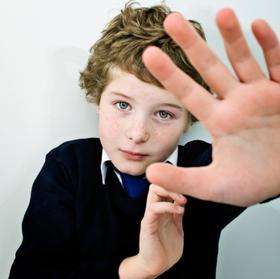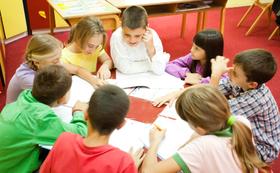While school-based bullying has been an issue since the beginning of public school institutions, public schools today are seeking out new solutions to provide all students and parents with support and guidance. Today, in an effort to educate both bullies and victims, schools are implementing early-intervention programs to combat the many issues of bullying in public schools.
Bullying in ОЫОЫВю»ӯ Schools: Signs and Symptoms of Problems
According to the public school program Stop Bullying Now, parents and school officials can identify specific signs as indications of a bullying issue. In fact, according to studies reported by Stop Bullying Now, an incident of bullying occurs every seven minutes, as the experts assert: вҖңChildren, after all, learn from what they see us do, rather than from what we say. When adults do not intervene, bullies may feel there is nothing wrong with their actions. Targets may feel they deserve the bullying.вҖқ To prevent a negative cycle of violence and attacks, both kids and adults can identify three specific types of bullying: physical, verbal, and exclusive.
Physical bullying signs, as Stop Bullying Now supports, are evident through вҖңhitting, kicking, pushing, choking, punching.вҖқ Verbal bullying, on the other hand, is seen by вҖңthreatening, taunting, teasing, starting rumors, hate speech.вҖқ Lastly, exclusive bullying is evident, often, through a less obvious symptom. In this third case, when a child is bullied by being excluded from activities, вҖңThis does not mean that a child should not have the right to choose to play, or not to play, with another child; it does mean that children should not be allowed to systematically exclude others: вҖҳNo one play with Mary;вҖҷ вҖҳNo one wants to play with him;вҖҷ вҖҳDon't be her friend.вҖҷвҖқ Bullying can lead to serious physical and emotional ramifications; specifically, oftentimes the act of bullying results in the bully blaming the victim for the abuse, or can also result in the victim blaming him or herself for the abuse. The impacts can be deeply emotional and painful.
This video offers a documentary on bullying in public schools.
Who are the Bullies?
While bullying can occur at any location, among both female and male students in any age group, research is learning about specific patterns of bullying behavior. Generally, however, as Stop Bullying Now further supports, bullying is вҖңDone by someone with more power or social support to someone with less power or social support.вҖқ Yet in striving to find out more about bullying patterns, CNN revealed in their investigation вҖңStudy: Bullying Rampant in US Middle SchoolsвҖқ that nearly four out of five middle school students admitted to acting like a bully at least once each month. Adding to this, вҖңA new study that found such aggressive behavior to be more common than previously thought,вҖқ as 558 Midwestern middle school children revealed that 80% of young teen behavior included вҖңphysical aggression, social ridicule, teasing, name-calling and issuing threats within the previous 30 days.вҖқ Again, while bullying can occur from school grades as young as kindergarten and even preschool, it is being theorized that middle school teens are engaging in more bullying-type behaviors than any other student group.
Stopping the Bullying: ОЫОЫВю»ӯ School Initiative
As CNN reveals, research surmises that bullies can account for nearly 15 percent of a schoolвҖҷs population. To solve this crisis, CNN asserts that вҖңparents and teachers must learn how to deal with bullying behavior because that makes it clear that it's not just a normal part of growing up.вҖқ While each school has its own specific consequences and codes of conduct, there are rising national organizations that are specifically aiming to cease the bullying acts that are occurring in public schools.
This video offers some suggestions as to how to deal with bullying in school.
The National Center for Bullying Prevention (NCBP)
The National Center for Bullying Prevention is one of the many national organizations focused on helping students learn more positive behaviors to combat bullying issues. As the organization asserts, вҖңIt might seem like bullying is too big a problem to solve, but itвҖҷs not! When people work together, they can accomplish great things.вҖқ
To get the community, including parents and students, involved, NCBP provides community members with links and articles for information and support. Specifically, the program lists appropriate books for parents to read with their children and provides lesson plans for teachers to talk about issues and alternatives to bullying, while also providing creative outlets, such as role-playing activities for students, to become more open and aware of bullying issues. By taking advantage of these resources, NCBP asserts that adults and students are engaging in the solution: вҖңWhat can you do? Reach out to younger students and help them learn what they can do to prevent and respond to bullying.вҖқJuvenile Justice: Anti-Bullying Programs
In an additional alternative for support and community involvement, the organization Juvenile Justice outlines specific strategies for combating bullying issues in their article вҖңDeveloping an Anti-Bullying Program.вҖқ As the organization explains, studies show that nearly 60 percent of boys have been, at some point, engaging in bullying activities. In fact, by the age of 24, nearly 40 percent of these bullies had possessed three or more criminal convictions.
To deal with these issues and hazards, this juvenile organization has created a Bullying Prevention Program, where leaders strive to вҖңreduce bullying in schools, and reduce the overall effects of bullying in the community, including school violence, truancy, and adult crimes.вҖқ This program is completely available online, as many schools and community leaders have taken advantage of such agendas in order to confront any issues in their school and/or community.
This video offers anti-bullying advice for students.
To find out more about bullying issues at your childвҖҷs school, speak with teachers, counselors, and/or administrators for information and tips for support. If you are concerned about your son/daughterвҖҷs safety and/or behavior, counselors and administrators can discuss their schoolвҖҷs specific bullying program to offer guidance and support.
Questions? Contact us on Facebook. @publicschoolreview















